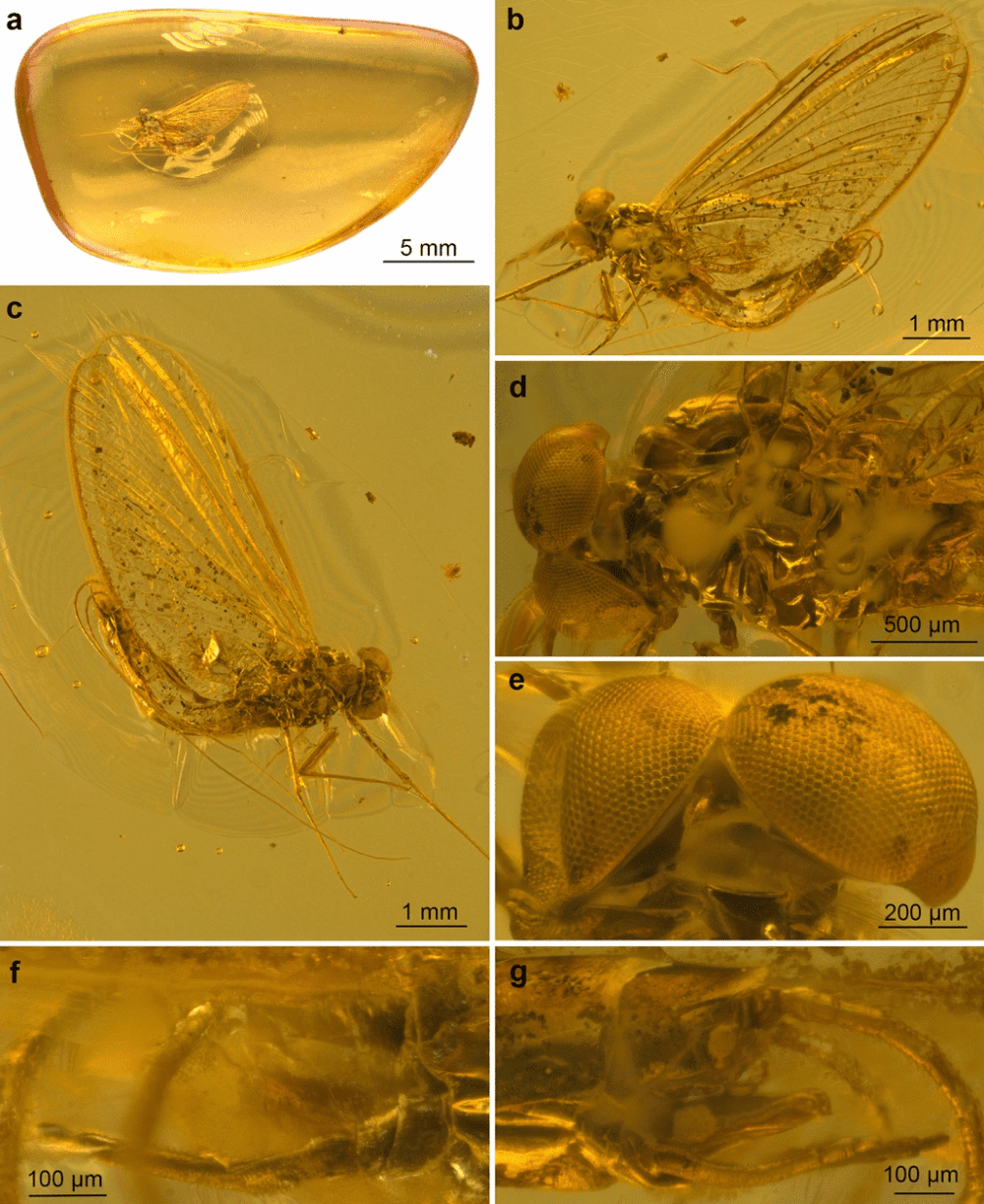A drop of ancient amber has given rise to a new-to-science group of insects with the aid of teeny tiny technology. Using microtomography (Micro-CT), researchers were able to confirm the existence of the genus Calliarcys contained within Eocene Baltic amber, representing a rare opportunity to learn more about ancient mayflies, which are hardly ever preserved in the sedimentary rock fossil record.
Amber fossils are Earth’s answer to the inside of a Kinder Egg. Not only are they both a rather 60s shade of yellow, but they can contain delicate curiosities which, in the case of amber fossils, can be hundreds of millions of years old.
Trees have many weird and wacky ways of defending themselves (the trojan ant offerings are a particular favorite) and one of those includes producing resin, the sticky substance which eventually forms into amber. It oozes out of breaks in the bark, which is why unsuspecting insects often get sucked inside, resulting in fossils that have the extra perk of preserving soft, delicate specimens in remarkable detail.

The male Calliarcys antiquus preserved in Eocene Baltic amber. Image credit: R Godunko et al, 2022. Scientific Reports,
We have these dazzling fossils to thank for much of our understanding of the evolution of certain insect groups, including mayflies, who are largely understood from specimens retrieved from Eocene Baltic amber, and Miocene Dominican and Mexican ambers. Specimens retrieved from those sites mostly belong to the subfamilies Leptophlebiinae and Atalophlebiinae, but now we can add a shiny new genus to the mix: Calliarcys.
The mysterious specimen, however, didn’t make things easy for the researchers behind the discovery, having turned translucent in certain parts that were pivotal in forming a positive ID. However, the puzzle would prove to be no match for a crack team of international scientists wielding some impressive technology.
Using Micro-CT, they were able to produce a 3D image of the insect using X-rays that captured even the tiniest of structures with detail down to 0.5 micrometers. They could then compare this against extant species of mayflies and conduct molecular studies to properly place it within the evolutionary tree.
“In short, it all started with the discovery of a beautiful insect preserved in amber, which attracted the attention of the expert eyes of a scientist,” said study co-author Professor Javier Alba-Tercedor to Phys.org. “And which ultimately required the enthusiastic collaboration and detective work of five scientists based in research centers located in four countries, who, after applying the latest techniques, were finally able to name and describe an insect that has remained locked inside a drop of amber for millions of years.”
The study was published in Scientific Reports.
Source Link: 35-Million-Year-Old Amber Found To Contain An Unknown Group Of Insects